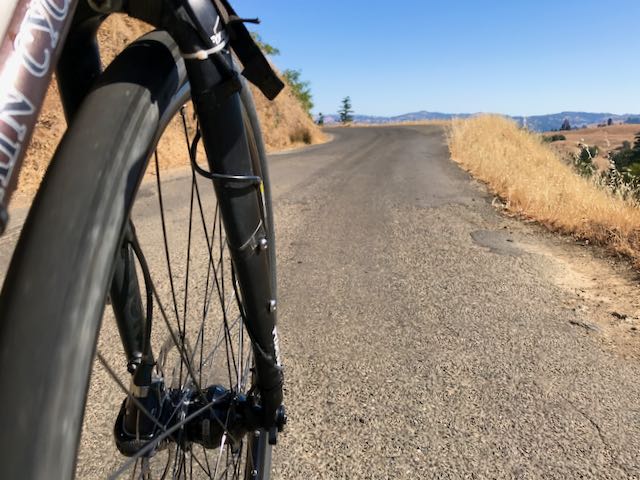GPS cycling computers are useful but how often do we think carefully about what we need them for or how we plan to use them before making a purchase? The GPS device almost seems as essential a piece of gear as a multi-tool or even a helmet. And for most, its essentialness derives more from a desire to track and post activities than from a need to navigate or avoid getting lost.
Here’s what Bicycling.com, in its article The Best GPS Cycling Computers You Can Buy Right Now, suggests are the most important features to consider in your purchase of a GPS cycling computer:
- Smartphone connectivity
- Sensor compatibility
- Maps and navigation
- Strava live segments
 Of course, Bicycling.com doesn’t begin its article by asking whether you even need a GPS device. Nor does bikeradar.com’s Best Bike Computer’s 2022 or Cyclingnews.com’s Best cycling computers for all your route mapping and data tracking needs. Cycling News even admits that with a “wealth of features” GPS devices are “not unlike strapping a smartphone to your handlebars.”
Of course, Bicycling.com doesn’t begin its article by asking whether you even need a GPS device. Nor does bikeradar.com’s Best Bike Computer’s 2022 or Cyclingnews.com’s Best cycling computers for all your route mapping and data tracking needs. Cycling News even admits that with a “wealth of features” GPS devices are “not unlike strapping a smartphone to your handlebars.”
With a wealth of features GPS devices are not unlike strapping a smartphone to your handlebars.
If GPS cycling computers are becoming more like our phones, why do so few of us put our phones on our handlebars? With nicely designed phone mounts like those offered by Quad Lock and Peak Design, plus all the other functionality the phone offers that GPS devices do not, there’s almost no reason NOT to mount your phone to your handlebars. Or is there?
Ok, sure, price is a factor. Your Wahoo, Garmin or Hammerhead comes with a mount while the Quad Lock and Peak Design products require purchasing not just a mount but also a special phone case or universal adapter.
Another concern might be battery life. But most navigation and tracking apps, like the mobile app from Ride with GPS, run in airplane mode. And if you’re on a multi-day backcountry tour you’re probably already carrying auxiliary batteries or can charge from a dynamo hub.
What about when you don’t have cell service? Again, with most apps you can download maps and continue to navigate in airplane mode when there’s no cellular signal.

The Best GPS Cycling Computer Depends on Your Reasons for Riding
Let’s drill down a bit into questions like “What’s your motivation for riding in the first place?” If a reason you ride is to escape the distraction of the phone, but you still want to be able to navigate and track a ride, then keep the phone in your pocket and use a GPS device.
As noted by Cycling News, GPS devices–take the Hammerhead Karoo 2’s touch screen and Android operating system, for example–are beginning to look and operate a lot more like phones. And short of the GPS device itself becoming a phone, almost all recent models have the ability to pair with your phone so your phone can pass all those important messages and other notifications to your device during your ride (and also sync your Strava achievements in real time). Sure, you can turn those features off, but wouldn’t a real commitment to “riding as freedom from [insert your technological albatross here]” require leaving all the technological distractions at home?
With all this technological integration, our bikes are becoming the canaries in the coal mine for the singularity!
Yeah, yeah, yeah, there’s the safety argument. How will you call for help without a phone? Or how will you know a car is approaching from behind without your Garmin Varia Radar Tail Light? What’s worse is that bicycle manufacturers are beginning to build the technology directly into bikes. The Cannondale Synapse features SmartSense which integrates Garmin’s Varia with the bike itself. “Just snap the power pack into the cradle, and roll out,” says Cannondale, knowing that the SmartSense “intelligent system of lights and rear-facing radar is making you more visible, and more aware of what’s around you.” With all this technological integration, our bikes are becoming the canaries in the coal mine for the singularity!
Seriously, though, this is precisely why this is not a “Best GPS Cycling Computers” review and why we need to return to the question of why we ride. What are the intangibles that you derive from cycling? If they are predominately or even purely about fitness levels, physical achievements, and social sharing, then a device that can track all your fitness metrics and sync them instantaneously to your platform of choice might be exactly what you need.
Zen and the Art of Adventure Cycling
If the intangibles you derive have more to do with the joys and challenges of unexpected encounters–the way the sunlight filters through the redwoods, the screech of a hawk fending off a raven, a tractor parade in the rural community your route passes through, or the places your mind wanders an hour into a long climb–then the question of what you need out of a GPS device (or phone) is going to be rather different. If unexpected encounters are most likely on new or unfamiliar routes, then your navigation technology needs to be optimized for rich maps and have features that make rerouting mid-ride and creating new routes in the field simple and intuitive.
On familiar routes, where powerful navigation features are unnecessary, unexpected encounters require us to be present at any given moment. It is in these moments–hearing our own breath, sensing a shift in the wind suggesting we’re near the top of the climb, or feeling a change in our bike’s handling that might warn us of a wheel that’s going out of true–that even the subtle delights and discomforts of otherwise mundane rides become adventures.
No matter the type or level of adventure you’re seeking, the key is planning a trip that strikes a balance. On one hand, you want to build in possibilities for the unexpected to occur. On the other hand, you don’t want the unexpected challenges to outweigh the unexpected joys.


Really want to bring the unexpected into a ride? Try a fixie or navigate using road signs.
Comova’s cycling trips are designed to take you to unexpected places and provide unforgettable experiences. We expertly curate and plan your trip to keep you comfortably outside your comfort zone. Paradoxically, getting comfortably outside your comfort zone requires a lot of research and planning. Anyone with the passion for adventure can have a misadventure. Experience that harnesses passion, on the other hand, is the recipe for adventures where discovery, learning and growth occur.
Our goal is for guests who aren’t already undertaking the planning of their own cycling adventures to gain the skills to do so. Which brings us back to the “Best GPS Cycling Computers.” Earlier we said that the answer depends on your reasons for riding. That’s because your reasons for riding will shape both how you plan a ride or trip and your mindset while on the adventure.
Next month we’ll lift the hood on how we plan the routes for a range of multi-day trips. From trips using our Cazita as a base camp and point-to-point credit card-style tours utilizing hotels and AirBnBs to backcountry trips with no services, we’ll show you how trip planning aimed at balancing unexpected encounters shapes the navigation tools you’ll want en route.
Which is exactly why this isn’t a “Best GPS Cycling Computers” review. Deciding on the best GPS cycling computer for you, if you need one at all, depends on your answers to the questions of why you ride, how you plan a ride or trip, and the mindset you intend to have while on the adventure.
